In a recent update shared by the UK Carrier Strike Group, HMS Iron Duke, a Type 23 frigate, can be seen playing a key role in the ongoing Exercise Strike Warrior.
The training sees the frigate deploying its sensor and weapon capabilities to defend the fleet from simulated missile attacks and surface threats.
DUKE-ing it out!
HMS Iron Duke goes in for the hunt. ⚓️
Using her Wildcat, advanced sensors and weapons, she’s been defending the fleet from missile attacks and surface threats in Exercise #StrikeWarrior.#FrigateFriday pic.twitter.com/deMbgdow4y
— UK Carrier Strike Group (@COMUKCSG) October 18, 2024
HMS Iron Duke’s Wildcat helicopter is being used to enhance the ship’s surveillance and offensive capabilities, while advanced sensors and weapon systems enable the frigate to operate efficiently within the task group.
The UK Carrier Strike Group tweeted, “DUKE-ing it out! HMS Iron Duke goes in for the hunt,” referring to the vessel’s crucial role in the exercise.
For HMS Iron Duke, this exercise offers an opportunity to demonstrate its combat capabilities while honing the skills of its crew in complex maritime scenarios.
What is Strike Warrior?
Exercise Strike Warrior is a major naval training event held by the Royal Navy, designed to enhance combat readiness and strengthen interoperability among allied forces. Taking place off the coast of Scotland, the exercise involves a wide array of naval assets, including surface ships, submarines, and air units, such as the UK Carrier Strike Group (CSG).
HMS Prince of Wales, one of the Royal Navy’s Queen Elizabeth-class aircraft carriers, plays a central role, alongside other vessels like HMS Iron Duke. The training scenarios during Strike Warrior include simulated air and missile attacks, anti-submarine warfare, and surface combat exercises, providing a rigorous test of the fleet’s capabilities.
The exercise also serves as a crucial preparation stage for future deployments, ensuring that the Royal Navy and its allies remain ready to respond to global threats.
It brings together forces from NATO allies and partner nations, fostering coordination and tactical skill development among participants. By simulating high-intensity combat operations, Strike Warrior aims to ensure that participating units, including aircraft, frigates, and destroyers, are well-prepared to meet the challenges of naval warfare.





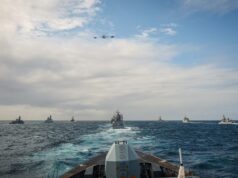

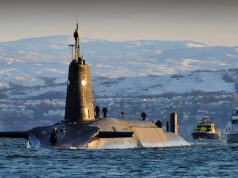
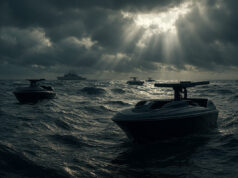
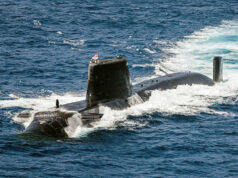

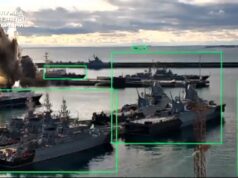
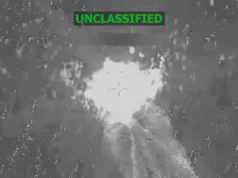

Quite aside from anything else, Iron Duke is an all time great name
Iron duke referred to the shutters on Wellingtons property to defend it from vandals
as are warspite and indefatigable and ark royal. names that resonate, not like the T21’S are getting.
Er, should not a T45 be defending against missile attack?
And invoking the helo sounds like the author read ‘Red Storm Rising’ Hammer and British counterpart. Too often.
Let’s bear in mind that T23 + Sea Ceptor is much more competent than T42 + Sea Dart ever was.
With a likely reach out to 40km Sea Ceptor ticks an awful lot of boxes very well.
There needs to be a fall back solution if T45 is offline so this has to be rehearsed.
When the Chinese Navy is outbuilding the USN, I understand your thoughts but disagree.
We need a well rounded fleet to deliver defence- that means enough AAW Destroyers at Sea all the time and able to also commit to CSG.
We don’t have it and no excuses should be made for not having it, however, I do agree with your point.
The RN needs a fundamental review on manning, retention and platforms. Simple as.
the report surrounding sex allegations won’t happen done recruitment any g5 at all.
CAMM’s fine for conventional missile defence and has been used for such in the Red Sea. Sea Viper has longer reach and upgraded can be used against ballistic missile defence, but if it’s in position absolutely no reason a Type 23 can’t use Sea Ceptor.
I don’t disagree. However, we put a £4Bn +/- carrier to sea and at the very least #1 45 should be with her if at least not #2.
I understand that T23 can do point defence, and should rehearse those drills but, the world is changing and NATO philosophy may point to niche capability being brought to the battle but, Trump is not a player; he is a danger to the free world and should NATO implode, we need a strong, rounded, Royal Navy.
I see… Europe do not pay their dues but the problem is Trump that does.
Do you want to sabotage NATO DB? It seems so.
I was born in Europe and speak three European languages, very intelligent remark AlexS.
Europe has to stand up. Britain needs to fight it’s own wars by itself and be able to contribute to NATO.
Agree – over reliance on others is a very dangerous strategy.
but that’s been to issue since the early 19fh century
Agreed 💯
NATO is Not like a trump golf club membership. Every member country of NATO is committed to a minimum expenditure of 2% of GDP. I agree not every NATO country is fulfilling that commitment.
maybe a batch 2 type 45. all fitted with and not for.
the RN needs a fast build new destroyer of a realistic size and configuration modern ones have to meet the needs of a destroyer, fast, long endurance and powerfully armed these basic requirements have, in recent years becoming very expensive assets both to build and operate. I’m not a fan of oversized ships such as T26. a smaller sized ship, fast to produce, meets the needs of the type should be the basis in the design.
You’re obsessed with smaller ships ike there’s some significant cost saving, there isn’t, all you’ll get is more crew leaving.
Also we won’t get any mew destroyers till T83, were transitioning from Sampson and Slyver VLS to mk41 and as yet unknown radars, they’re not going to back pedal to more slyver cells.
Except you are complaining about an exercise testing the air defence of a T-23, not a real life deployment without a T-45…. very different scenarios.
and at some ungodly price per missile it beggars the question ‘what is going on with the mythical Dragonfire? it is needed now and not ‘one day’ unless it works and is seen to work, further funding should be stopped the houthi drone war gives the perfect testing environment for putting it up real testing. in a operational setting. this has taken far too long to get a working model in8 to fleet
A Burke, USS McFaul is also escalating PoW in the North Sea.
See my post. Trumps comes, USN goes. And?
Bloody spell checker again! I mean escorting PoW.
HMS Dauntless will be joining up with the group soon if she is not already there.
Can the Wildcat talk to the carrier yet? Has the link 16 been installed?
AA
This would imply that it has some form of ship to cab comms other than a shouty phone?
Following successful tests around the end of 2022, it was agreed that both Army and Navy Wildcats would be upgraded over “the next few years”, the Army ones also getting radars. I’ve heard nothing since on the datalinks, but recent photos of Army Wildcats show they still have no radars.
Army copters having radar and a laser designator able to fire Martlet would be a big enabler in the drone scenario.
As I understand it, the navy Wildcat radar is quite good and to be able to add that as a live feed to the surface and low-air picture on a frigate is a must surely, and an additional capability far outweighing the cost of the link16 apparatus?
AA
Has HMS Iron Duke been scheduled to participate in CSG25? If so, will NSM be operational before sailing? Cannot overemphasize recommendation that CSG25 avoid SCS, unless all components are loaded out to hunt bear.
Are you saying that the chinks would attack our ships then? If we avoid SCS that essentially cedes it to the Chinese!
Stating that if an incident should occur during CSG25 SCS patrol (either directly w/ PLAN, or indirectly, because of an incident involving PRC and the Phillipines, SK, Taiwan, etc.), RN inadvertently could become involved in an incredibly lethal conflict w/ minimal/no notice. CSG25 may not be able to properly defend against incoming threats.* HMG would be compelled to explain the loss of a CSG, NATO Article V would be invoked, and the incident would immediately spiral into the equivalent of an a/c inverted, flat spin. Eventually (2030s), RN will have the capability to boldly sail whither it chooses in international waters, but suggest that 2025 is not that time, nor the SCS the place.
*The exception to that statement is, of course, the accompanying Astute class SSN.
Article 5 is all the more reason not to interfere with ships upholding FON!
What signal would it send if a nations CSG was scared off from the SCS? It can’t happen! I wouldn’t be surprised to see other countries ships along with POW at that time either.
We’ve had this discussion, we were scared off in the last deployment.
AND anyone know anything about ordinance landing 200ms from a US CVN back in April? Apparently, the Houthis got close.
So, I’m with USAF on this one, if they go the SCS, they need to all fully bombed up ready to hunt… Panda!
“hunt…Panda!” Excellent! 😁👍
Indeed, would be more reconciled to the prospect of this venture if a USMC F-35B squadron was available for deployment on PWLS, one or more ABs to accompany the CSG and P-8A overwatch, but unfortunately USN (writ large) appears to be preoccupied currently w/ hungry ‘gators infesting the ME swamp. Otherwise, will remain concerned from RN entry to exit of SCS (firm adherent of the proposition that Murphy’s Law is a universal constant). 🤔😳🤞
Given the small number of escorts able to be deployed, the lack of any self defence systems on the QEs looks even more risky. No other carrier in service is deemed not to need its own gun and missile defences.
RN since decades ago have had a very subpar AA policy. Frigates in Falklands with worse AA than in WW2. Imagine if Argentinians had torpedo bombers.
As a Torpedo bomber would have to be low and slow I dare say that the 40% loss of Argie AirPower in the war would have been higher don’t you think?
It’s not deemed so, we just can’t afford it, VLS is a very expensive option and we don’t have a system like RAM in service